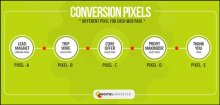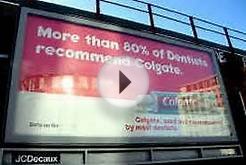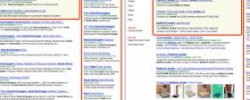 Did you hear what Digital Marketer’s CEO and Founder, Ryan Deiss, said?
Did you hear what Digital Marketer’s CEO and Founder, Ryan Deiss, said?
He predicted that 2015 would be the year of the Great Pixel Land Rush.
“Soon all display advertising will be retargeted advertising and the pixel will become even more valuable than the click itself. As larger advertisers continue to buy up ad inventory (and create their own retargeting audiences) those that fail to ‘pixel’ their site visitors won’t be able to afford to advertise.”
At Digital Marketer, we’ve already begun preparations for the “pixel land rush.” We buy traffic today just to place a pixel. Sure … we’re monitoring click costs, cost per lead and all the rest but we’re paying closer and closer attention to a new metric: CPP.”
CPP is Cost Per Pixel.
Pixels allow us to follow up with people who have visited our website in general, specific pages on the site, a sales pages, etc.
The key is that pixels allow you to make TARGETED offers to individuals based off of pages they’ve visited.
For example, we run ads to promote blog posts on content marketing. Then, we retarget the people who read the article with a specific lead magnet for… BLOGGING. (Learn how we do this, here).
It’s much more powerful than making them a broad offer (ex. Digital Marketing)… it allows us to solve a SPECIFIC problem for them.
BUT, pixels can get confusing… especially when it comes to Facebook advertising!
I get a TON of questions about Facebook advertising pixels in Digital Marketer Engage…
… and, since it’s the year of the pixel, I’m going to clear up all of the confusion.
I’m going to outline the different TYPES of pixels, when to use them, where they go, and most importantly… how YOU can use pixels to create higher converting Facebook ad campaigns.
 Types of Pixels
Types of Pixels
There are two you need to be utilizing:
- Conversion pixels
- Website Custom Audience pixel
Let’s start with…
Conversion Pixel
A Facebook conversion pixel is a snippet of code provided by Facebook. The code is placed on a specific web page. When a user visits the page, it triggers the pixel and counts a “conversion”.
Conversion pixels can be used for:
1. Tracking
Essentially, conversion pixels are used to track how many times an action occurs.
Let’s say you place a conversion pixel on your thank you page.
The only way someone could reach this page is if they bought your product.
By placing the tracking pixel you can count how many people have visited that page, and therefore how many sales you made from each of your Facebook ads.
If you’re using a standard 5-step funnel (like we explain here) you could place a conversion pixel on every step of your funnel to track conversions on each step.
For example:
Pay close attention to where you’re placing your pixels.
For example, in regards to the image above:
- Pixel A would track landing page visits.
- Pixel B would track optins.
- Pixel C would track Tripwire sales.
- Pixel D would track Core Offer sales.
- Pixel E would track Profit Maximizer sales.
![]() To create or manage your conversion pixels, click on Conversion Tracking in the left hand side of your ad manager:
To create or manage your conversion pixels, click on Conversion Tracking in the left hand side of your ad manager:
To create a pixel, click “Create Pixel” in the top right hand corner. Notice that Facebook gives you a few categories to choose from.
This doesn’t mean much other than where the pixel will be categorized in your reports.
QUICK HACK: Keep in mind that in order to track fully through a funnel and to be able to read your reports, you’ll need to make each pixel in the funnel a different category.
For example,
Each of the pixels above would need to be a different “category” (checkouts, registrations, leads, key page views, adds to cart).
Why? Facebook hasn’t quite figured out their reporting when it comes to tracking more than 1 objective.
So, you’ll need to make sure each of the pixels is a different category. That way, when you customize the columns in your ad report (see below), you can select whichever categories you designated for each pixel in the funnel. You can TRACK!
For example, here are stats from one of our funnels. You can see leads captured and tripwire sales:
This is powerful because you can see which ads, demographics; placements, etc. are ACTUALLY producing results for your Facebook campaign!
Scale the ones that are converting and trim the ones that aren’t working.
2. Optimization
You can use Facebook pixels to tell Facebook what you WANT out of your campaigns.
When setting up a Facebook advertising campaign Facebook asks what the objective of your campaign is:
If you’re running traffic to something that’s a simple action, like a lead magnet opt in or a webinar sign up, you should almost ALWAYS use the “Increase conversions on your website” objective. (Learn how this decreased our lead cost by 5x, here).
But how does Facebook know what to optimize for? You tell them – using conversion pixels!









